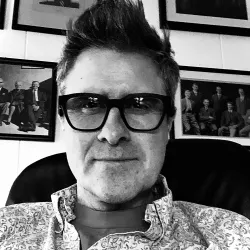Professor Louis Moresi

Content navigation
About
I am a professor of geophysics / geodynamics and I am interested in understanding the evolution of the deep Earth over geological time, how this evolution is recorded in the superficial geological record,and how to build computation modelling tools to simulate the Earth. The tools of my trade are computational programs and numerical algorithms.
I am a strong supporter of open source code so my publications will also find links to repositories where the source code is available with examples of how to reproduce peer-reviewed benchmarks and published results. Not surprisingly, I am also a believer in literate programming [1], recent examples are in the form of ipython / jupyter notebooks.
For more information about me, my work and some blog posts see http://www.moresi.info
Fellow, Australian Academy of Science, 2023
Fellow, American Geophysical Union, 2017
Fellow, Royal Astronomical Society, 2000
[1] Knuth, Donald E. (1984). “Literate Programming”. The Computer Journal (British Computer Society) 27 (2): 97–111. doi:10.1093/comjnl/27.2.97.
Affiliations
- Geophysics, Member
Research interests
I am trying to understand the thermal-mechanical evolution of the Earth through geological time. This includes the fundamental question of how convective heat loss from the deep Earth is expressed mechanically as plate tectonics, the role of continents in the modulating this expression, the interaction between processes on this planetary scale with instabilities at the lithospheric scale — whether rheological or mechanical in nature, the influence of atmospheric feedbacks on the solid earth, and the signatures of all these processes that we can expect to find through geophysical observation of the present day Earth, and in the long-term geological record.
Much of the complexity in the surface expression of mantle flow can be attributed to the non-linear nature of the constitutive laws. The Earth, on geological timescales, behaves as a non-linear viscoelastic fluid with a finite strength due to small-scale processes such as faulting and ductile shear localization which can be treated through the theory of plasticity. The underlying processes which we treat in this manner introduce complexity in that they introduce a significant dependence on the stress, strain, and thermal histories of the fluid representation. Plasticity is typically a phenomenological description of the material response to stresses and is cast in terms of the stress state of the material (from which the motions follow); in the Earth, stresses are less well known than the kinematics and much is likely to be learned from plasticity models which are founded on the kinematics of surface motions.
Projects
- Active tectonics, landscape evolution and groundwater flow, Principal investigator
- Dynamic evolution of subduction zones and continental collision, Principal investigator
- Modelling large-scale groundwater systems in Australian basins, Principal investigator
- Underworld Geodynamics, Principal investigator
- Active tectonics, landscape evolution and groundwater flow, Supervisor
- Computational Geodynamics, Supervisor
- Dynamic evolution of subduction zones and continental collision, Supervisor
- Modelling large-scale groundwater systems in Australian basins, Supervisor
- Seismic monitoring of groundwater variations beneath the Great Artesian Basin, Collaborator
Location
Jaeger 2 / 231
